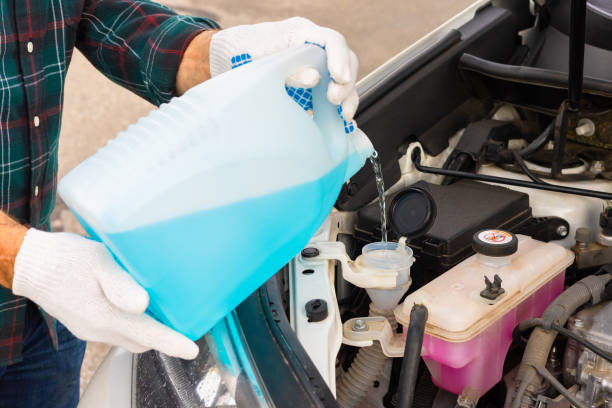O motor de seu veículo é uma impressionante conquista da engenharia contemporânea no setor automotivo, projetado não apenas para oferecer um desempenho superior, mas também para controlar o calor gerado durante seu funcionamento. A manutenção adequada do sistema de arrefecimento é essencial para evitar o superaquecimento e assegurar a eficiência do motor. Este guia foi elaborado com o objetivo de auxiliá-lo a monitorar a temperatura do motor, aprimorando sua experiência ao volante e garantindo sua segurança e satisfação enquanto dirige.
1. Coolant regularly
Avoid it getting too hot
Coolant, also called antifreeze, is important to keep your engine at the right temperature. Without enough coolant in the engine, the engine can overheat, causing serious damage and expensive repairs.
Engine running efficiently
In addition to keeping your engine from overheating, the right amount of coolant will keep it running properly. Coolant helps dissipate heat so your engine can perform optimally under different conditions.
Know what your coolant is made of: Most coolants are a mixture of water and antifreeze. The additives in antifreeze stop corrosion and lubricate the water pump, ensuring smooth fluid flow through the engine.
2. Coolant works
When your engine heats up, the coolant absorbs excess heat and carries it away from vital components. This heat is then dissipated through the radiator, keeping the engine temperature within a safe range.
3. Low coolant level.
If you need to be careful, the temperature gauge should be above normal, there should be steam coming from under the hood and there should be a sweet smell, which means coolant is leaking. These are warning signs that your coolant level may be incorrect.
4. Monitoring intervals
Check the coolant level every few months or as directed in your vehicle’s service manual. It is also a good idea to check the coolant before going on a long trip or when the weather is very bad.
Coolant
- Place your car on a level surface: To get a correct reading, make sure your car is parked on a level surface.
- Allow the engine to cool: Do not open the hood until the engine has completely cooled. Failure to do so may result in burns.
- Locate the coolant reservoir: Locate the coolant reservoir in your car’s manual. It is usually a clear plastic tank near the radiator.
- Check the coolant level: Look for markings on the reservoir that indicate where the minimum and maximum levels are. These lines indicate where the coolant level should be.
- Check the condition of the coolant: Note the color and clarity of the coolant. Healthy coolant is usually brightly colored and free of dirt or other contaminants.
5. Influence the decision
When deciding whether to fill or flush your system, consider factors such as the age of the coolant, how often you maintain your car, and the manufacturer’s instructions.
6. Right coolant
There are different types of coolant, such as ethylene glycol-based coolant and propylene glycol-based coolant. Read the manufacturer’s instructions to ensure you find the right coolant for your car.
Choose the right coolant for your car
To ensure you are using the correct type of coolant for your make and model, check your car’s manual or ask your mechanic. If you use the wrong coolant you can damage your engine.
Common mistakes to avoid when mixing different types of coolant
If you mix different types of coolant, the chemicals can react, damaging your engine and causing it to perform less well.
Leaks seen
Check your car regularly for coolant leaks, as even small leaks can lead to coolant leaks over time. Repair any leaks immediately to prevent engine damage.
The wait time for checking the reservoir is too long
It’s a good idea to check your coolant tank regularly, especially before a long trip or when there are big temperature changes.
FAQs
1. How often should I check my coolant?
Check the coolant level every few months or as directed in your vehicle’s manual.
2. Can I replace the coolant with water in an emergency?
Water can work in a pinch, but it doesn’t have the protective ingredients that coolant does, so it may not be enough to keep things from freezing or rusting.
3. What should you do if you notice that your coolant level is consistently low?
If the coolant level continues to drop, it may mean there is a leak in the system. Have a mechanic inspect your car so you can find and repair any leaks immediately.
4. How to get rid of old coolant?
To keep the environment clean, old coolant should be properly disposed of at a recycling center or hazardous waste facility.
5. Is it important to flush the coolant system regularly?
Flushing your coolant system at the recommended intervals will remove built-up dirt and debris, keeping your engine running optimally and extending its life.

